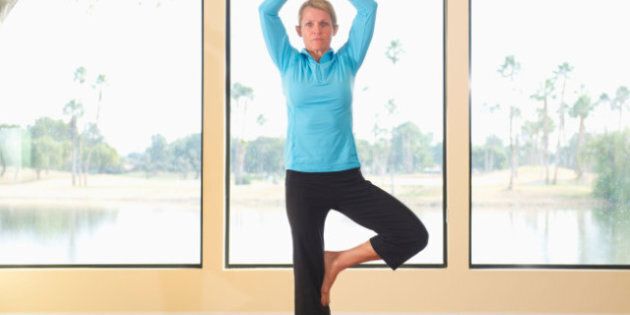
As a yoga enthusiast I would like to respond to the recent article in the New York Times: "How Yoga Can Wreck Your Body."
Mr. Broad's article in the NY Times is sensationally titled and irresponsibly illustrated. In my opinion, yoga is no more dangerous than any other type of physical activity. If you are practicing without proper supervision or instruction, then, yes, you might get hurt. If you are ignoring your body's signals and pushing yourself beyond your limits, then, yes, you might sustain injury. I would imagine that this common sense approach applies to any sport or physical activity, not only to yoga. The pictures that accompany the article are ridiculous and serve only as an example of what not to do. I find it strange that Mr. Broad attempts to present a serious problem, but finds it appropriate to illustrate his point with pictures that make a mockery of his subject.
It seems he is somewhat confused when it comes to what constitutes yoga. His example of a yoga professional pushing herself to injury during a photo shoot is more an example of someone modeling poses rather than practising yoga. I myself have practiced yoga for more than a decade in various countries, cities and classes and have yet to encounter a teacher who has been so badly injured by his own practice that he has taken to his back to teach his class. I am not discounting the sincerity of Mr. Broad and Mr. Black's examples and anecdotes, but I think it is important to clarify that these are more likely exceptions than the norm.
As far as the physical practice of yoga is concerned, properly instructed students will be encouraged to take things at their own pace and to rest and hydrate when needed. As a student, if your instructor is pressuring you to move into poses that are too advanced or if you feel under-supervised, then you need to choose a different teacher or class. I would agree that some instructors are less qualified than others, but that does not mean that the practice of yoga as a whole is unsafe. In any profession, it is possible to encounter under-qualified individuals, not only in the field of yoga.
To state that yoga is dangerous because of the risks of the physical poses is only addressing one area of the practice. Yoga is so much more than asana or physical poses. Much of yoga is about letting go of ego and self-judgment. Yoga teaches us to be OK with wherever our practice finds us in that moment, to accept ourselves instead of criticizing what we think are our shortcomings. Yoga instructs us to let go of the outcome of poses and focus instead on being present, to breathe and move with awareness. If we pay attention as we practice yoga, we are much less likely to suffer injury. In my opinion, these yogic lessons not only teach us how to practice safely, but also how to live happy and healthy lives. How many times do accidents happen every day simply because we are distracted? If we stop focusing on the finish line and on the outcome of everything we do, we might take more time to live with awareness and enjoy each moment along the way.
I am saddened to think that this article might discourage people from discovering the joy and healing that a regular yoga practice can provide. Restorative yoga uses deep relaxation techniques to harness the body's natural healing abilities. Prenatal yoga helps alleviate the aches and pains of an ever-changing pregnant body while mentally and physically preparing a mom for birth. Mr. Broad makes no mention of these or other types of yoga. I am not sure how he can justify such sweeping generalizations about the practice of yoga without discussing the many pieces that make up the whole.
The article also seems to ignore one of the most important and healing aspects of yoga, which is pranayama or breath work. Most simply put, in yoga we are taught to breathe. Ever heard the phrase "take a deep breath" when you find yourself in a challenging situation? It may seem simple, but this is a yogic technique. Breathing deeply calms the nervous system, and reduces the fight-or-flight responses that the body produces in situations of stress. Since stress is a leading cause of illness these days, learning to manage our stress is far from harmful. Safely reducing stress may in fact save our lives, or at least improve the quality of the lives we lead.
As a yoga instructor and yoga therapist, I have had the privilege of using my training to help cancer patients manage their pain. One of the first things I do is teach them how to breathe. I have seen firsthand how yoga has helped these people manage their stress and their pain and, in some cases, even to help them recover. I am sure they would be of a significantly different opinion to Mr. Broad when it comes to the safety and suitability of yoga.
A basic yoga class should be suitable for anyone who is interested in improving their quality of life. Mr. Broad should be ashamed of discouraging people from doing something to improve their health. I am not sure why he has made such an effort to discredit a practice that helps and heals people all over the world. Choose to practice yoga with care and awareness and you may safely enjoy the many benefits that a healthy yogic lifestyle has to offer.